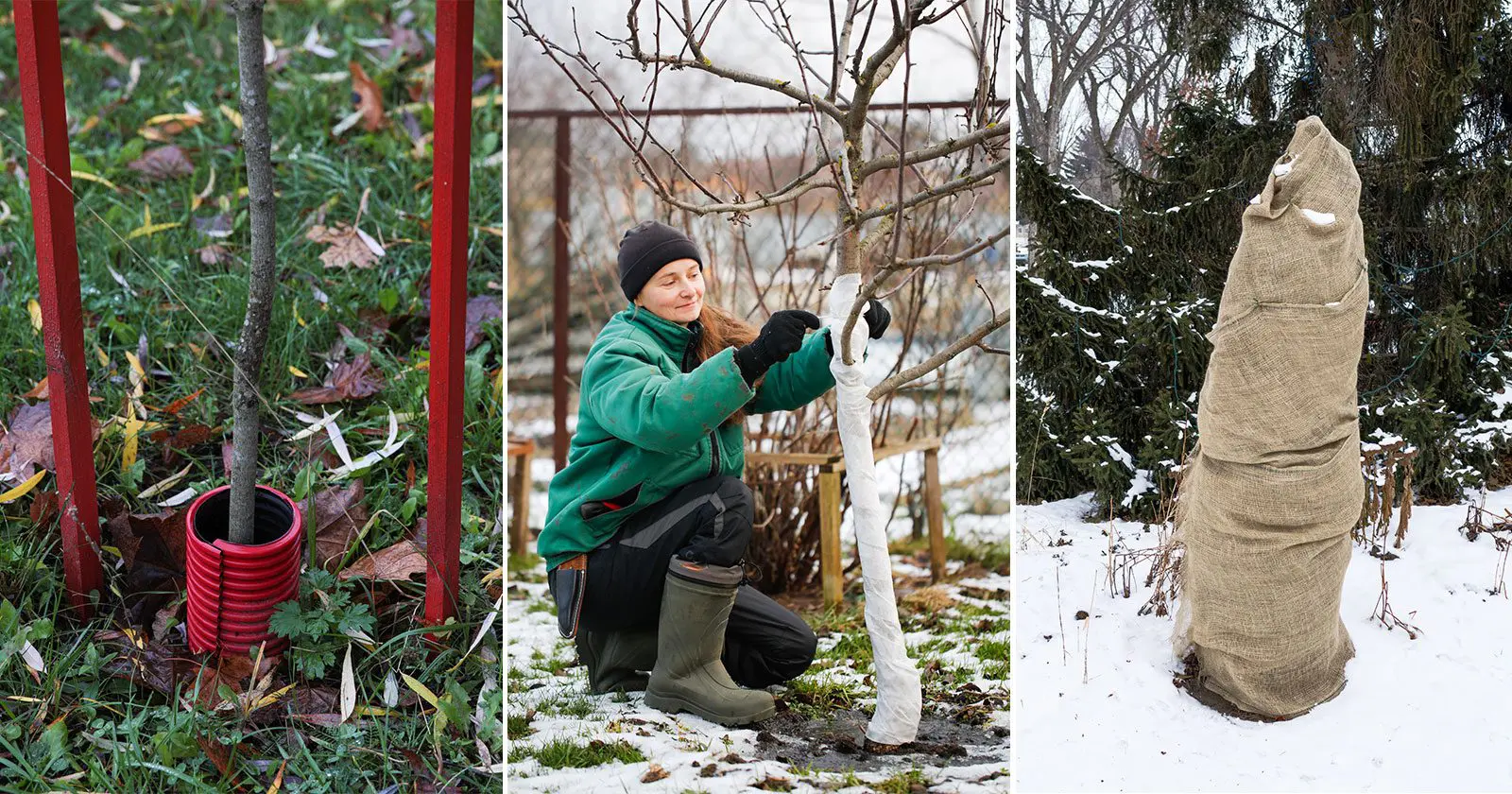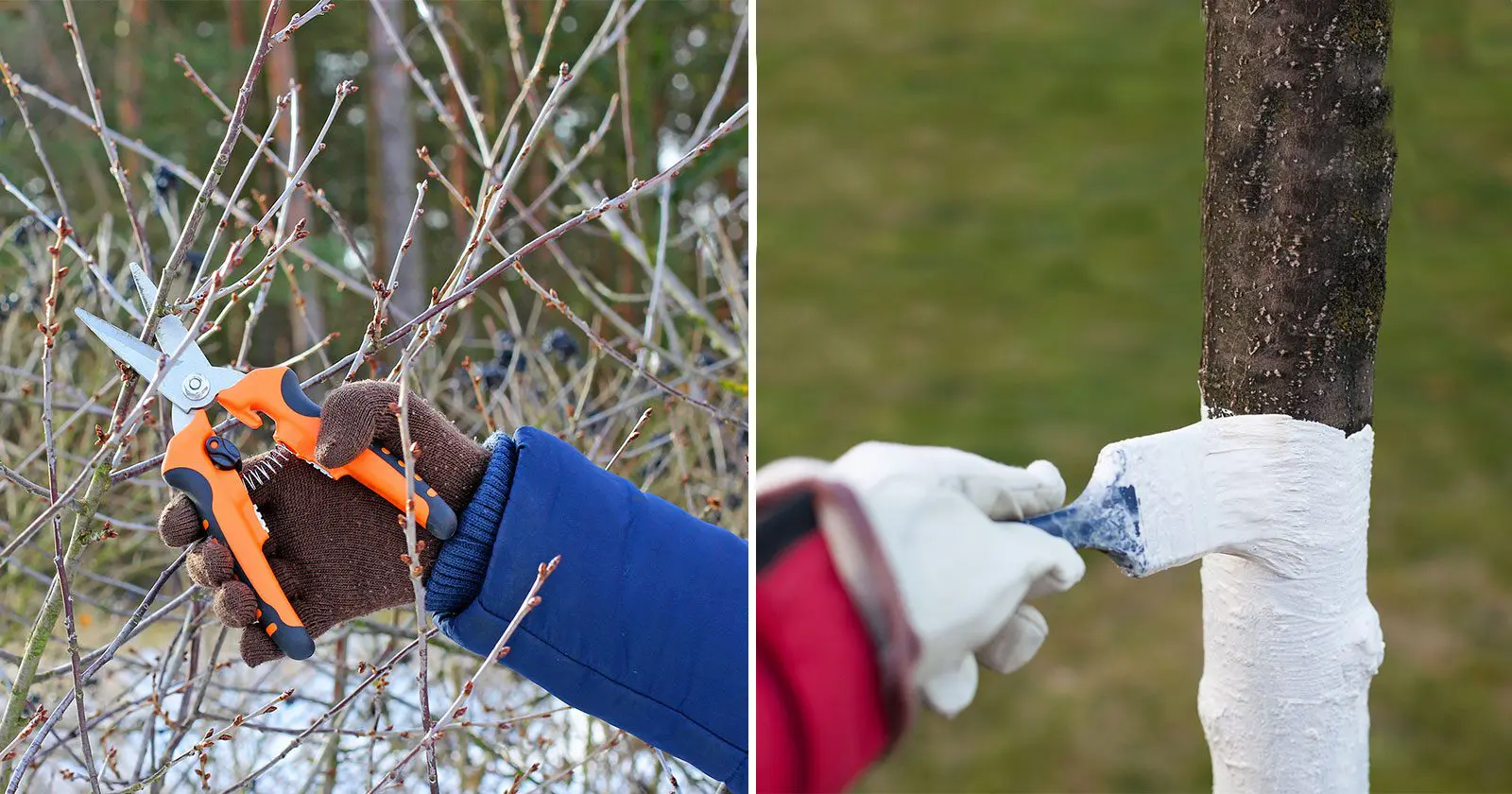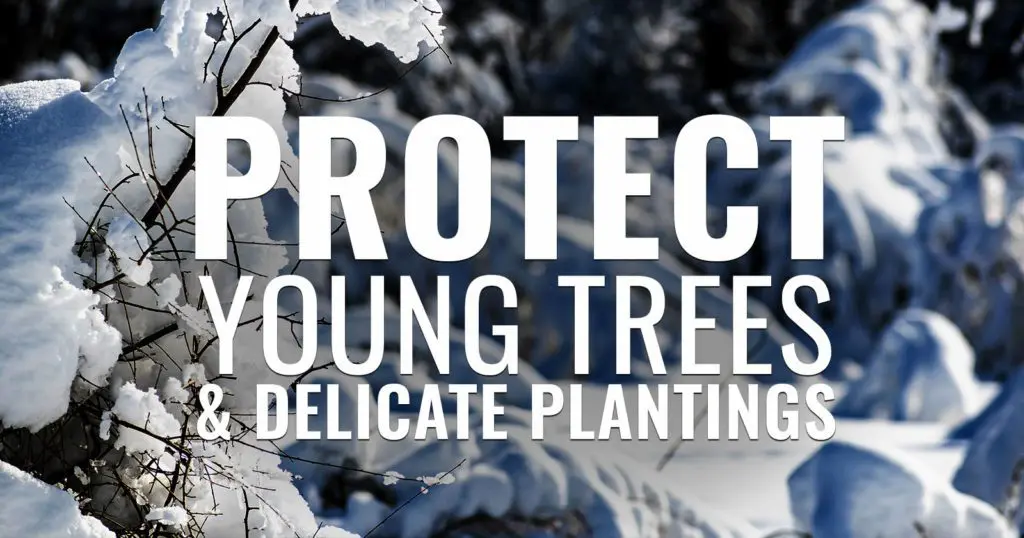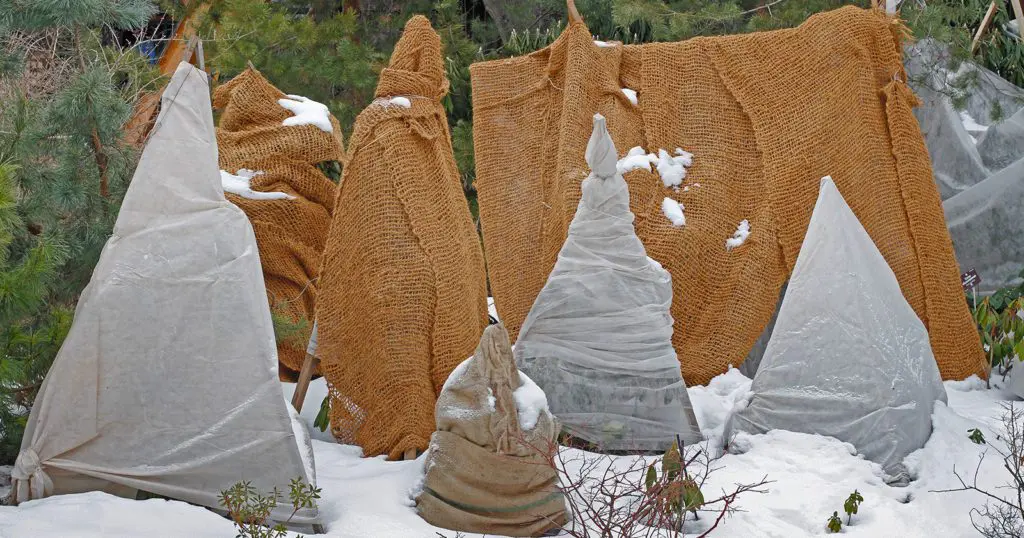There is still time to protect your landscape for healthy growth next spring!
Protect your landscape this winter. Extreme weather can take a toll on your landscape plants. Every spring, we unfortunately see plants that have been hit by a tough winter discover and discover the damage it can cause to trees and shrubs. Fortunately, there are steps you can do now to prepare plants for what’s coming.
Extreme cold isn’t the only challenge faced by woody plants; in fact, plants hardy to your region should endure normal winter temperatures just fine. However, winter can wreak havoc in other ways.
Early cold spells can damage plant tissues that haven’t had a chance to harden off for the winter.
- Dry winds and winter sun can dry out or “burn” conifer needles and broadleaf evergreen foliage, which continue to transpire (give off water vapor) during winter.
- Frozen soil means plants can’t take up water to replace the moisture lost from evaporation and transpiration.
- Midwinter thaws can “fool” plants into breaking dormancy too early, and the tender new growth may be killed by the next cold snap.
- Alternating freeze/thaw cycles can heave new plants out of the ground, leaving roots exposed to drying wind and sun.
- Bright winter sun heats up dark tree bark, which can freeze and crack when temperatures drop quickly at sunset.
- Deer, mice, rabbits and other animals gnaw bark and browse leaves and twigs when other food becomes scarce during long, cold winters.
Although wet, heavy snow can damage branches, snow cover is usually good for plants. A layer of snow provides moisture and helps insulate the soil and roots from fluctuating temperatures.

If you have Deciduous Trees and Shrubs
Mature trees and shrubs that are hardy in your region need no extra protection. However, young and newly planted trees and shrubs benefit from some extra TLC:
- Because plant roots may not have ventured very far into the native soil, it’s especially important to water newly planted trees and shrubs thoroughly into fall, until the ground freezes.
- Once the ground is frozen, apply a 3″ to 4″ layer of insulating mulch, such as bark mulch or pine straw, around the base of the plant. This helps insulate the soil so it stays frozen and helps prevent heaving. Keep the mulch several inches away from the trunk to prevent rot and discourage rodent chewing.
- Tender young bark is easily damaged by gnawing mice and rabbits. Protect the trunks of young trees — especially fruit trees — with tree guards made of plastic or wire.
- The bark of young trees is also susceptible to sunscald. Paint the south side of the trunk with a solution of diluted white interior latex paint or wrap the trunk with paper tree wrap. This also helps prevent frost cracks, which occur when dark-colored bark heats up on a sunny winter day and then rapidly cools at night.
If you have Conifers and Broadleaf Evergreens
Trees and shrubs that remain green — conifers and broadleaf evergreens, such as rhododendrons — slow their growth but never go fully dormant. It’s especially important that they have a ready supply of water whenever the ground isn’t frozen.
- Drying winter winds are especially damaging to evergreens. In exposed, windy areas, erecting a windbreak helps prevent damage, as can wrapping shrubs with burlap.
- If branches are bending under the weight of a heavy snowfall, gently remove some of the snow. However, don’t try to remove ice after an ice storm; you’re likely to cause more harm than good.
- Some evergreens, notably white pines, are susceptible to damage by road salt sprayed onto branches by passing snowplows. In spring, you’ll see brown needles on the road-facing side of the tree. Protect hedges and shrubs with burlap or shrub wraps. On taller trees, there is little you can do; consider replanting with more salt-tolerant species.
- Keep deer from browsing on hedges and shrubs by wrapping them with burlap or shrub wraps.

Winter Pruning
Pruning is an essential part of plant care, but you must take care to prune at the correct time of year. Some plants require winter pruning when they’re dormant. This prepares your plants to focus on growing flowers and fruit when they emerge in the spring. It also maintains a healthy shape and reduces the risk of diseases taking over.
Some of the plants to put on your winter pruning to do list should include: grapevines, autumn-fruiting raspberries, figs, wisteria, roses, apple and pear trees, deciduous shrubs, and multiple fruit bushes – such as blueberries, gooseberries, or red currants.
Your goal with your winter pruning of fruit bushes is to remove old wood and create the best shape. Doing so leaves behind the healthy, young branches to produce large harvests each year
If you would like help to protect your landscape for the big winter chill, Cole will be happy to provide expert care for your plants and trees. #colelandscape #colelandscaping #landscaping #winterpruning



